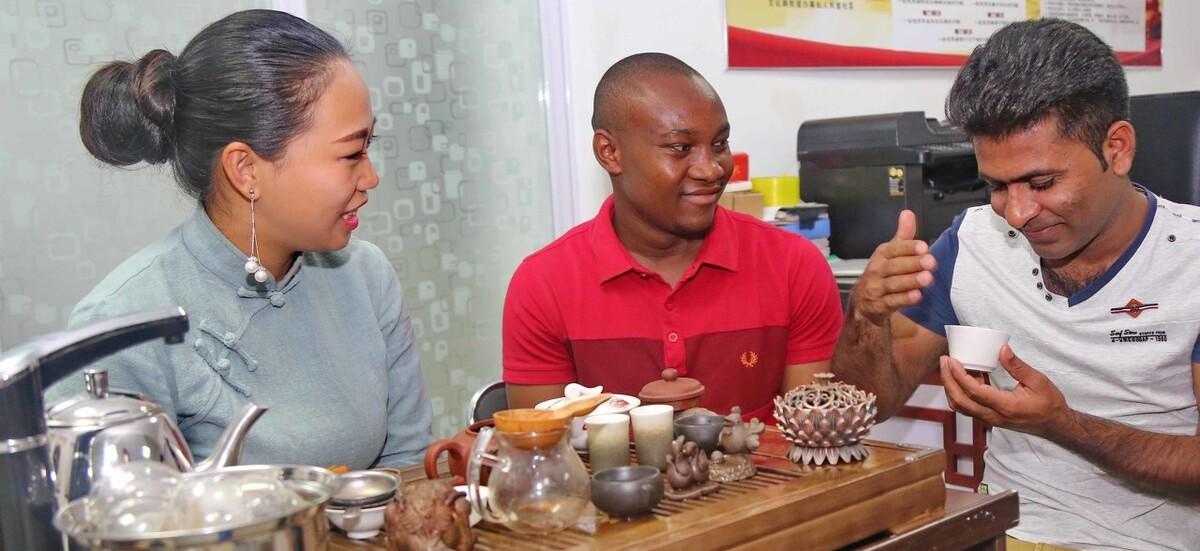When it comes to tea culture, we must first talk about green tea, after all, many teas come from green tea, and then we will expand on green tea!

In fact, oolong tea is the common name of green tea, from the production process, that is, oolong tea (green tea) is a semi-fermented tea, if not fermented tea belongs to (green tea), fully fermented tea belongs to (black tea).
Therefore, the degree of fermentation is different, and the aroma of tea and the feeling and taste it brings to itself are different.
But the fermentation is different, they all have the natural rich aroma of the tea, the aroma of the characteristics, it can be said that each has its own advantages, let people relax!
Speaking of which, the degree of fermentation of green tea is different, and the color will be different.
For example, northern Fujian oolong tea, the degree of fermentation is relatively heavy, oolong tea in southern Fujian is relatively mild, oolong tea in Guangdong and northern Fujian are not bad, and oolong tea fermentation in Taipei is relatively light.
Among them, the fermentation is relatively light is oolong tea, there is a frozen top oolong, the color of tea is oil green, sand green.
Fermented heavy oolong tea is da hong pao, its brown color, close to reddish brown, brown.
No matter what kind of oolong tea, no matter what color is very bright!
What about the color of green tea brewed?
Due to the different origins, the color of the bubble is also different, there are bright colors, there are light yellow, bright yellow, orange yellow, orange red,
Therefore, the lighter the fermentation, the lighter the color of the brewed tea, the heavier the fermentation, the darker, the redder and more moist the tea color.
People in the world often say that drinking oolong tea (green tea) pays attention to the four rhymes, so the origin is different, and the charm of the tea produced is different!
Generally, the oolong tea produced in northern Fujian, such as Da Hong Pao, is called "Yan Yun" by the world.
The oolong tea (Tieguanyin) produced in the southern Fujian area is called "yin rhyme" in the world.
The oolong tea produced in Guangdong is called "Mountain Rhyme" by the world.
The oolong tea produced in Taipei, (frozen top oolong), is called "Qing Yun" by the world.
The production process of green tea is mainly composed of these parts!
1. The first is to pick the tender tea, through the sun's wind, drying, so that the tea leaves are dehydrated, and the tea leaves are called (withered) before.
2. It is to do green, to put it bluntly, it is to let the tea leaves go green and red!
3. It is to kill the green, on the good red, it must be controlled, the tea can not be moldy, to preserve the highest quality of the tea red.
4. Down is kneading, the finished tea leaves, by hand or machine, kneaded into the corresponding ball, strip.
5. Absorb the remaining water, air dry, box, bag.
Speaking of which, how can we identify, what is good green tea and poor green tea?
1 We first have to look, the color of the tea, to taste.
Good green tea, color, color, oil green, sand green, bright.
The bad thing is that the color is dark and not bright.
2. Brew the tea color to taste.
Good green tea, brewed tea, bright yellow, water color translucent.
After the poor bubble comes out, it will appear light yellow, with many impurities and not transparent.
3. It is to look at the tea leaves after brewing to taste.
After the good tea leaves are brewed, the tea leaves are shiny, intact, and the middle is green and reddish on both sides.
After brewing, the tea leaves are colorless, the leaves are incomplete, loose burr edges appear, and the tea leaves are black and brown.
(Some of the pictures come from the Internet, if it is infringing, notify me to remove it immediately)